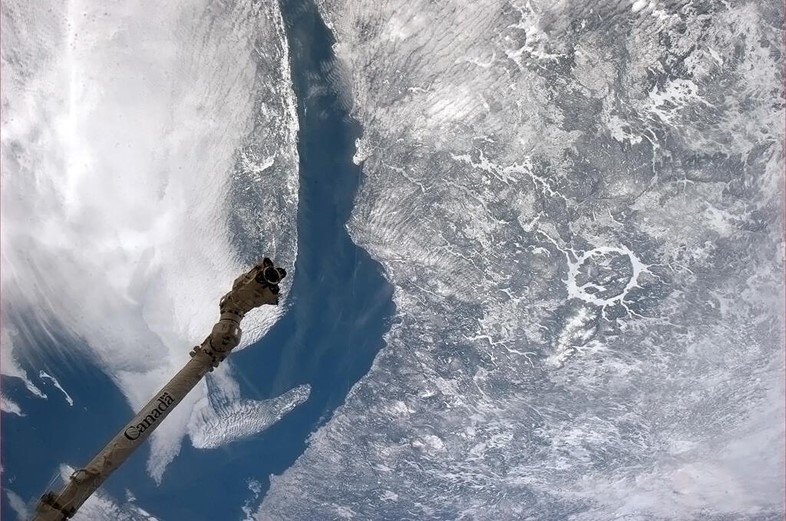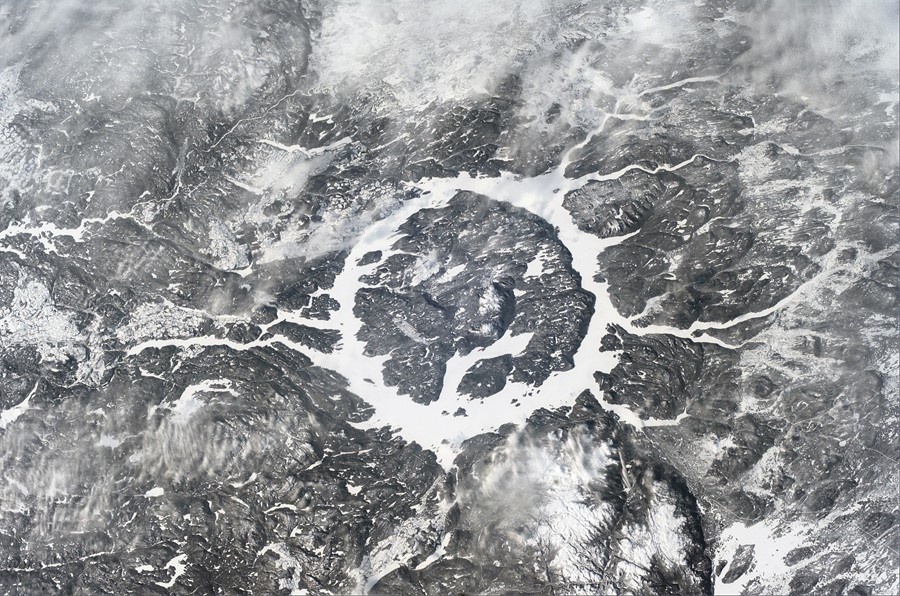The week super/collider zooms in on the Manicouagan Crater in Canada, a gargantuan hole in the Earth
Where on Earth?
Manicouagan Crater, Canada
GPS Coordinates: 51°23′N 68°42′W
On the night of March 24, 1993, a photograph of the night sky taken through the Schmidt telescope at the Palomar Observatory in California revealed something strange: a faint string of objects travelling together though deep space. A few days later, a more powerful telescope in Hawaii imaged the formation, revealing a dense, linear bar made up of multiple fragments with dust trails streaming away from them – a broken-up comet.
Further study of Comet Shoemaker-Levy 9 (named after its discoverers) soon found that the fragments were orbiting Jupiter, which had probably captured and crushed up the comet with its immense gravity field. By October 1993, astronomers had worked out with 99% certainty that the broken-up string of icy rock would hit Jupiter the following July and settled in to watch the fireworks. The resulting impacts, 21 in all, revealed the immense destructive power of such collisions – punching Earth-sized holes in Jupiter’s atmosphere which lasted for months before fading away amid the planet’s swirling clouds.

What on Earth?
Here on Earth, there’s intriguing evidence that our planet was once the site of just such a series of impacts. Open up Google Maps and scroll over to Canada – then zoom in and take a look to the right of the ‘Québec’ label. Notice something weird? A massive, circular lake? That’s an impact crater from a 5km wide comet or asteroid that hit the Earth over 200 million years ago, making it the oldest known and largest visible impact crater on the planet.
When compared with other craters which may have once formed a straight line across the planet, it’s possible that a chain of comet or asteroid fragments hit the Earth in a single event, creating Manicouagan and also the Rochechouart crater in France, the Saint Martin crater in Manitoba, the Obolon crater in Ukraine and the Red Wing crater in North Dakota, although this hasn’t been conclusively proven.
Manicouagan is an impact structure or ‘astrobleme’ (which poetically means ‘star wound’) – one of many on Earth that shows what happens when objects in space intersect our orbit around the sun. Stretching 100km across, it is what’s termed a ‘complex crater’ because of the uplifted structure at its centre, which now forms René-Levasseur Island. Surrounding this is Lake Manicouagan, a massive annular lake covering some 1,942 square kilometres and containing nearly 140 cubic kilometres of water, which makes it the fifth largest lake in the world by volume. Today, the area is protected as Canada’s second-largest UNESCO World Biosphere Reserve, and is home to woodland caribou, cougars, short-eared owls, golden eagles, wolverines and other species.

How on Earth?
Although remote, visiting is now a lot easier thanks to the establishment of Uapishka Station – an interesting collaboration between the Biosphere Reserve and the local Innu Council of Pessamit. A series of cabins and dorms on the banks of the Manicouagan reservoir at the foot of the Uapishka Mountains, the station offers accommodation, meals, Internet and scientific research facilities – aiming “to foster dynamic occupation of the northern territory, in order to build scientific, socio-professional, community and tourist development.”
For more information, visit the website.
